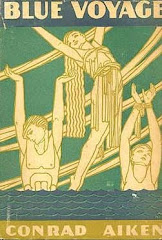
On the shore were the remains of an antediluvian forest with ugly black stumps showing. Under The Volcano
Chris Ackerley has suggested that Malc's mention of the forest early in Under The Volcano intimates the Atlantis theme in the book. The forest forms part of the 'Leasowe' landscape created by Lowry for the childhood home of the Consul.
The forest Lowry refers to is the 'submerged' or 'petrified'or 'submarine' forest described on a bas relief in Leasowe Castle as once stretching from "From Birkinheven unto Hilbree, a squirrel may jump from tree to tree". The trees were last regularly viewed back in the 60's but have since disappeared under the shifting sands. The trees were at their largest towards the river Dee, and smallest at Leasowe. They were mainly oak and fir, also present were alder, elm and beech. They gave the appearance of actually being planted and were of great size. This process was quite possibly accelerated by the introduction of the massive sea wall, which caused the tide to turn upon itself, increasing the flow around the stumps. As a child I have this vague memory of seeing them as we walked out from Dove Point at Meols, Wirral to pick cockles at low tide. Lowry would have certainly have seen the forest as a child whilst playing on the shore at Meols.
The earliest mention of the submerged forest occurs in description of Cheshire dated 1615 by William Webb entitled Kings Vale Royal in which he calls the forest the 'Meols Stocks' alluding to the antediluvian origins of the forest:
In these mosses, especially in the black, are fir-trees found under the ground, in some places six feet deep or more, and in others not one foot; which trees are of surprising length, and straight, having certain small branches like boughs, and roots at one end -as if they had been blown down by the winds; and yet no man can tell that ever any such trees did grow there, nor yet how they should come thither. Some are of the opinion that they have lain there ever since Noah's flood.

The forest is also mentioned in the poem Iter lancastrense (1636) as 'Ye Stockes in Worolde':
But greater wonder calls me hence: ye deepe
Low spongie mosses yet rememberance keepe
Of Noah's flood: on numbers infinite
Of fir trees -swaines do in their cesses light;
And in summe places, when the sea doth bate
Down from ye shoare, 'tis wonder to relate
How many thousands of their trees now stand
Black broken on their rootes, which once drie land
Did cover, whence turfs Neptune yields to showe
He did not always to theis borders flow.

The forest seems to have had a special interest for Victorians appearing in several studies including Benjamin Blower's The Mersey, ancient and modern, ones contained in the Proceedings of the Liverpool Geological Society and the Transactions of the Historic Society of Lancashire and Cheshire. One of the most detailed accounts is contained in The History of the Hundred of Wirral by William Williams Mortimer (1847) The account is in the appendices of the book and is entitled 'Submarine Forest At Leasowe' telling of an excursion to the forest by the Liverpool Literary and Philosophical Society in April 1846:
It having been so arranged by the selection of the day for the excursion, that the party should reach the shore at the period of low water, they proceeded at once to the place called the Submarine Forest, entering on the beach at a point between the Castle and the Lighthouse.
To those who expected that the long expanse of sand between the embankment and the water was covered with stumps of trees of various heights, like a forest over which a hurricane had swept, nothing could be more disappointing. Apparently there was nothing worthy of notice beyond the ordinary extent of sand, diversified as usual with little rivulets flowing towards the tide, and with occasional pools, or patches of clay. The first indication of a forest was a projecting moss, like a gigantic nodule of clay, or like a projecting piece of rock. One of the party, however, drew attention to the fact that it was distinctly vegetable matter; in fact, a veritable stump, exhibiting its fracture horizontally, or nearly so, and it cleavage more or less vertically. Among the various projections or truncated pieces of root, large quantities of day and sand had effected a lodgment, and small portions of sea -weed were also attached to it. I am not aware that any other instance was noticed of a root apparently occupying the position where it had sent forth a stem, and thrown out branches and leaves: but in this instance it appears to me that there could be no doubt on the matter. It is not a little extraordinary, however, to find even a single root maintaining its anchorage, with such a strain of sea upon its tiny cables, where the material in which it is imbedded is liable to constant change, and where even its own substance is being daily rotted and frittered away.
Passing on along the sands, other indications of vegetable matter began to exhibit themselves. In some instances the clayey substance seemed to be impregnated with decayed vegetable matter; so that occasionally an ordinary observer could hardly tell whether a certain mass was merely a piece of blackened loam or a portion of rotten wood, of about the consistency of cheese. Passing still westward, the vegetable appearances became more frequent and more distinct; the whole area presented a carboniferous appearance, so that one could have predicted the existence of vegetable matter, even without the finding of a single specimen. But specimens existed in abundance; in one part the woody matter stood out in relief, like the veins of harder material, on the face of a weather-worn stone, suggesting the idea that it had been held in solution, and infiltrated into the cracks of the sand. In another, the margin of a streamlet, from four to six inches high, appeared to be a piece of darkened lias, but, on breaking it with the hand, it proved to be a portion of wood, very soft, and probably expanded, and holding the water like a sponge. Numerous instances occurred in which the timber so found admitted of the finger being readily thrust into it, in the same manner as into a piece of turf bog. Occasionally on breaking off a piece of the earthly matter, various strata of vegetable deposit appeared, like the marks that so frequently show themselves in coal, or like the leaves which appear in the fractures of various kinds of rock. Sometimes the wood was not in such a state of decomposition, but on the contrary, comparatively fresh and strong. Some was evidently birch ; and some evidently oak ; perhaps there were other kinds also. In some instances it retained the bark, in others this was wanting.
A few of the specimens, instead of giving evidence of rottenness, exhibited marks of partial petrifaction; as if minute portions of fine sand had been infiltrated into the substance of the wood, occasioning in it a shorter breakage, and rendering it almost impossible to cut it with a knife.
Another detailed account of the forest is included in Ancient Meols: or, Some account of the antiquities found near Dove point, on the Sea Coast of Cheshire by Abraham Hume. This states that timbers used in the library of Leasowe Castle came from the forest.

Here is Dove Point in 2006 with no sign of the forest at low tide:








Though you can see undulations in the sand at low tide; I always imagined these to be the trees of yore.....
ReplyDeleteOh they are still there ok. 60 years ago as a little boy living in Hoylake I used to be taken down there by my mum and dad. I remember there being hundreds of what I thought were odd shaped rocks, which on closer inspection were clearly trees, fallen boughs and twigs but all melded into what seemed to be concrete. The objects themselves actually seemed harder than rock and sort of echoed like steel when hit by another object....happy days, those were!
ReplyDelete